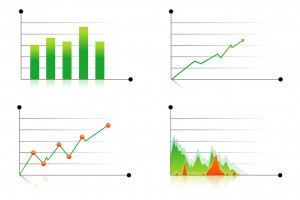Dec
18

Posted by nnlmneo on December 18th, 2015
Posted in: Data Analysis, Data Visualization
 Last week’s blog post was about using Excel to make data dashboards. As Cindy pointed out a dashboard is “a reporting format that allows stakeholders to view and interact with program or organizational data, exploring their own questions and interests.”
Last week’s blog post was about using Excel to make data dashboards. As Cindy pointed out a dashboard is “a reporting format that allows stakeholders to view and interact with program or organizational data, exploring their own questions and interests.”
What can that mean for your library? What does a library data dashboard look like?
In the OERC Tools and Resources for Evaluation, we have a guide for Reporting and Visualizing, which includes a section on data dashboards. In it are some examples of libraries using data dashboards. In their dashboards, libraries are sharing data on some of the following things:
Can you create a dashboard to tell a story? While libraries can keep (and post) statistics on all kinds of things, consider who the dashboard is for, and what story you want to tell them about your library. Maybe it’s the story of how the library is using its resources wisely. Or maybe it’s the story of why the library decided it needed more study rooms. Or the story of whether or not the library should eliminate it’s book collection and increase e-books and databases.
Consider what data you want to share and what people are interesting in knowing. Happy dashboarding!
Note: links updated 9/21/2017.